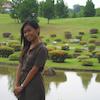Looking for budget stays in Ronda? This section is designed to save you time, money, and unnecessary stress. We've got insider tips to help you find affordable hostels and the cheapest places to stay in Ronda.
Ronda, in the province of Malaga, Andalusia, Spain, is the birthplace of the modern bullfighting culture in Spain and is the setting of many popular literary works, most especially Ernest Hemingway’s "For Whom the Bell Tolls."
Ronda has a very rich history that dates back to the Neolithic and Paleolithic ages. Human remains and settlements have been discovered in Cueva de la Pileta or the Cave of the Pool. Cueva de la Pileta is one of Ronda’s main attractions. Human remains and cave paintings and drawings that date back to prehistoric times have been discovered in Cueva de la Pileta.
Ronda is famously located on top of an escarpment, which is a large geological jut that is caused by and found on or near fault lines. Because of its location, Ronda has a majestic, high view of the surrounding area. Because of the elevated location, Ronda has some of the grandest bridges in all of Spain. Three bridges connect to the Ronda over the fissures and canyons. The first is Puente Romano or the Roman Bridge, which is also named the Puente San Miguel or Bridge of Saint Michael. The second is Puente Viejo or the Old Bridge, which is also named Puente Arabe or the Arab Bridge. The third bridge is Puente Nuevo or the New Bridge. All of the bridges have been central to the formation of Ronda and had strong links to history.
Because of its location, Ronda had been sought after by various conquerors including Julius Caesar during the Roman times. The city of Ronda had been passed around by various conquests and settlements, the most influential of which were the Phoenicians, the Romans, the Visigoths, the Moors, and various southern Spanish kingdoms. Ronda had been part of political struggles including the conquests of caliphates, taifas, the Spanish Inquisition, the Napoleonic Wars, and the Spanish Civil Wars. It is not a surprise that some of the most influential poets and artists have been born or settled in Ronda, and made the town the topic of much of their works.
Culture in Ronda is very rich, which includes bullfighting festivals and the Feria Goyesca, which is by the locals participate by wearing outfit in the style of Francisco Goya’s paintings.
Ronda has been a tourist destination since the nineteenth century and continues to be so in the present day. Ronda hostels are open throughout the year. Hostels in Ronda are abundant and range from the luxurious to the simple and cheap ones.
Written by Travel Expert Ronda
 Angelica Burrage
Angelica Burrage